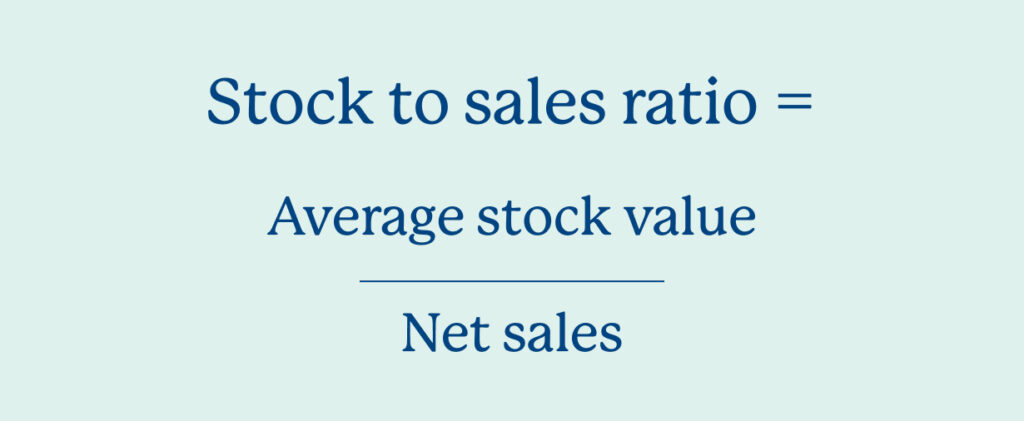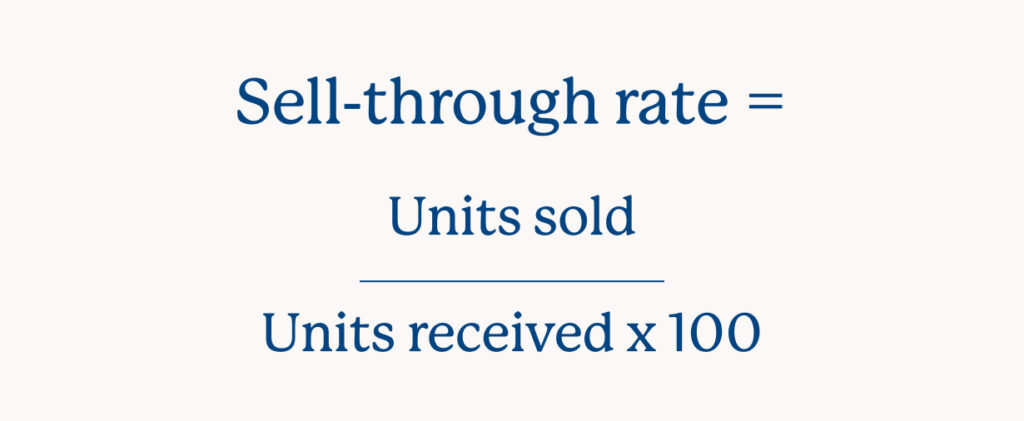
The term “dead stock” has two distinct meanings in the retail industry that are related, but not entirely the same. So before we go on talking about what to do with dead stock as a brick and mortar retailer, let’s start by clarifying the type of dead stock we are talking about in this post.
One type of dead stock refers to sought-after remainder products that are now valuable in a secondary market, like vintage fabrics, sneakers, or trading cards. This is the type of dead stock you can purchase as inventory.
That’s not the type of dead stock we are talking about here. We are referring to inventory you want to get rid of, not acquire, and that’s the other type of dead stock: products that are not selling, or are selling very slowly, and are occupying shelf space in your shop without customer demand. In other words, products no one is buying and you can’t get rid of.

Dead stock is bad for business!
It might not seem that terrible—after all, isn’t it nice to have a big selection of products available when customers visit your shop?—but it is really toxic.
Here’s why:
You’re paying to store product that isn’t selling. Your retail or warehouse space is not free. You’re paying for every square foot. When products that aren’t selling take up precious shelf space, you’re making less per square foot every month. Those losses add up!
Your customers get bored. While it’s okay to stock the same products all the time that DO sell, when you keep products that aren’t moving, you don’t have room on the shelves or in your inventory budget for new and interesting merchandise. Customers see the same, dusty merchandise on the shelves and visit your store less frequently, assuming things don’t change that often.
Your cash is tied up in inventory that doesn’t sell. When you hold on to dead stock, you can’t free up the money you spent to purchase that inventory until it sells. It’s like keeping dollar bills frozen in blocks of ice. Too many frozen dollar bills means less money to spend not just on new inventory, but on everything else: supplies, rent, payroll, etc.
Your job as a retailer is to get rid of dead stock as fast as possible, and to always be on the lookout for more. (Because more will always accumulate!)
So how do you identify dead stock?
To help answer this question, I reached out to Chris Guillot, founder of Merchant Method, a retail consulting business. Chris has coached hundreds of entrepreneurs in the brick-and-mortar retail space to run more satisfying, profitable businesses. I imagine some of her work involves helping businesses get rid of dead stock.
I told Chris that I had a confession to make about how I personally identify slow moving merchandise in my business, Fernseed. I don’t think I’m very scientific about it. However, I can walk through my shop on any day and point to the merchandise that isn’t selling. When you’re working the cash register, or shipping orders, you get a real hands-on feel for what’s moving and what’s not. But I wanted to ask Chris what more scientific ways she has of identifying dead stock.
As you can imagine, for someone with the word “Method” in their business name, Chris had a more objective approach. She recommends keeping a close eye on two metrics in particular.

1. Your stock to sales ratio, which is calculated as average inventory on hand ÷ net sales over a given period. Chris says to think of this formula as helping you understand how much you generally need to have in inventory to meet your monthly sales goals. “Think of it as the amount of choice you have to provide the customer in order to get the sales you want from the customer,” she says.
For weekly tips like this, subscribe to our newsletter
"*" indicates required fields
You can look at this number in the aggregate, across all inventory you have in your shop, or you can look at it by product category or vendor. How much of a product do you need to stock in order to make a sale? “Think about when you bring doughnuts to the office,” Chris explains. “No one wants to eat that last doughnut.” I notice this all the time when training new employees how to buy inventory for Fernseed. Often they won’t want to place a reorder until every last piece sells, but this is a mistake. I know from experience that people are more likely to grab a product that doesn’t look lonely on a shelf. You must always have a certain number in inventory to have a chance at selling just one.

2. Sell through rate, which is calculated by the quantity of products sold ÷ the quantity of products on hand at the start of the month x 100.
“This relates to how quickly the inventory moves, the rate of sales over a period of time,” Chris explains. “For example, I want to know in these 2 months how long it’s taken me to sell through these 96 protein bars.”
I ask Chris how she pulls this information on a particular line of products, to assess how one SKU, or an assortment of SKUs from a particular supplier, is performing. Is there a software that will flag this information for you?
“You really have to know what you started the month with, what you ended the month with, what you received in the month.” But, Chris adds, “the challenge with small business is: most points of sale will only tell you how much inventory you have NOW.”
So Chris recommends scheduling a regular time—once a month or once a season—to review how specific products are performing before making another big buy. And if you need data that your point of sale can’t provide (such as how many units of X product you received last month), get used to tracking that somewhere else.
“So many businesses want to not have to do math outside of their point of sale, but it is not avoidable,” Chris says. That said, the process doesn’t have to be intimidating and solely data-driven. And really, as long as you’re somehow checking in on how things are doing before making a big seasonal order, Chris says, it’s okay to take a more holistic approach to checking in on product performance. Software won’t always give you the full picture.

For example, you may stock hot chocolate mix year-round at a resort shop, but sales really pick up in the fall and winter. If you pull data on hot chocolate mix in July, your system might tell you it’s a dud, but you know better than to NOT re-order it for the upcoming fall and winter seasons.
At Fernseed we intentionally stock handmade pottery that always sells slower than factory produced, inexpensive terra cotta. Our system always likes to tell us that those products are C-grade, slow sellers that should probably go on sale. However I make the choice to stock that slower selling product because stocking handmade products is a values decision, and it differentiates us from other plant shops in the area.
While you may eventually choose to mark down slow selling seasonal or, in my case, handmade products, you might grade that product differently and employ a different markdown strategy.
Now that we’ve identified what’s not selling, what do we do with it? We know we have to get rid of it, but how?
Chris recommends rather than starting with markdowns, you give slow selling product one more chance to connect with customers by refreshing your merchandising around it.
“Sometimes we can lose touch with an item,” she says. “The team needs to get refreshed and re-excited about it, and that can be enough to jumpstart a slow selling item.”
Chris recommends moving to markdown strategies only after you’ve tried that refresh.

At Fernseed, we employ 3 levels of discounts before giving a product away to free up shelf space.
- Move it faster by discounting 20-30 percent (you still make a small profit)
- Free up the money you paid for the product by at least recouping your cost (40-50% markdown)
- Make a few dollars (while ultimately taking a loss on this SKU) while freeing up valuable shelf space
If we still cannot sell a product even for a few dollars, we have to give it away.
Chris recommends a few methods for getting rid of products that didn’t even sell at a discount:
- Bundle as a free gift for customers with purchase
- Giving away to staff, especially if there is a product education component (learning about what we sell)
- Donating it to a partner organization
Keep in mind there are some cases where you can return dead stock to a supplier, or where you may be contractually obligated to destroy it.
While it’s great to get rid of dead stock—hanging on to it can be an even greater cost to the business—the process of liquidating dead stock is costly. Your first goal should be to not end up with it in the first place.

So what strategies can you employ in your business to avoid accumulating product that doesn’t sell?
- Buy conservatively. Buy only the minimums on new, unproven products. Don’t be afraid to renegotiate minimums with vendors!
- Avoid stocking too many seasonal items. Instead, look for universal products that work for the season. For example at Fernseed we don’t buy cards that say “Happy Valentine’s Day.” Instead, we buy cards that center love and relationships without using the holiday name, which means those cards still sell after February 14!
- Remerchandise often, and explore different approaches to selling. If something isn’t selling in one area of the store, move it to another shelf. Bundle it with another product. Use merchandising (and staff education) to tell another story about it.
- Have more than one person involved in the buying process. Get a fresh perspective from someone on your team with better insight into a particular trend or customer profile. Don’t assume you, as the owner or lead buyer, always know your customer best!
Finally, balance your institutional knowledge and gut instinct with data, as much as you can. Don’t be precious about products that really, really aren’t selling. Find the joy in freeing up cash and learning from your missteps. Do not let slow moving product slow down your whole business.
Further Reading
A Newsletter That Goes Beyond Shopify 101
It’s easy to find beginner info about ecommerce online. If you’re past that? Subscribe to our newsletter for advanced strategies and need-to-know info for established shops. You'll get:
- Weekly tips to help you market and sell your products
- Updates when there is news that may impact your site
- Round ups of interesting links and info for brands
- Invites to our live trainings and webinars
- Instant access to our past emails
"*" indicates required fields
Browse Posts
A Newsletter That Goes Beyond Shopify 101
It’s easy to find beginner info about ecommerce online. If you’re past that? Subscribe to our newsletter for advanced strategies and need-to-know info for established shops.
Learn how the top shops grow:
"*" indicates required fields
Related Posts
Let's take your online shop to the next level
The Shopify websites we design have a reputation for substantial improvements to ecommerce conversion rates and online sales. Let's talk!
 Grab my guide to the 10 main ways to grow traffic and optimize to boost sales.
Grab my guide to the 10 main ways to grow traffic and optimize to boost sales.


